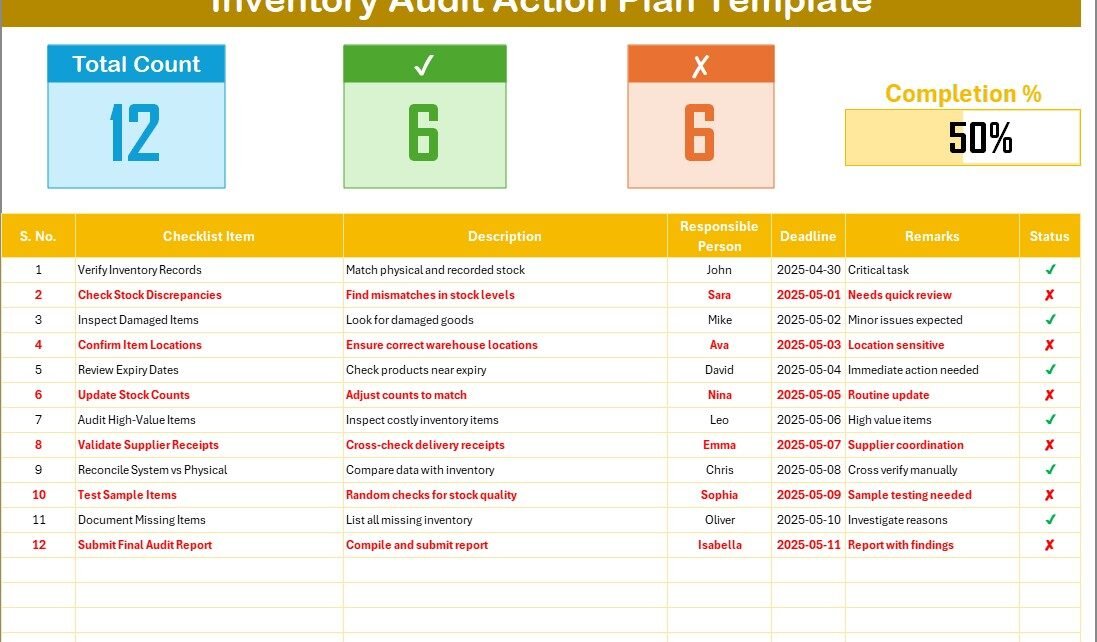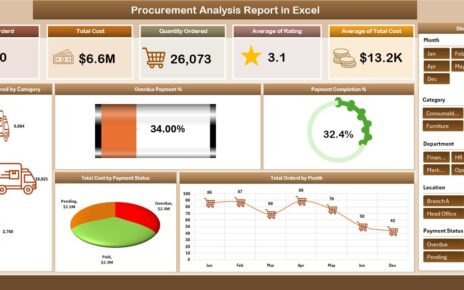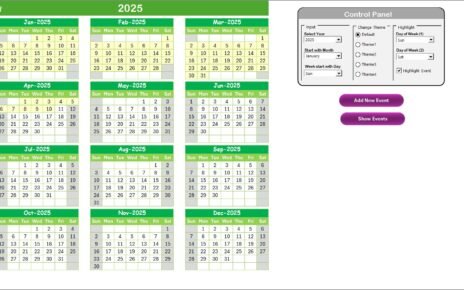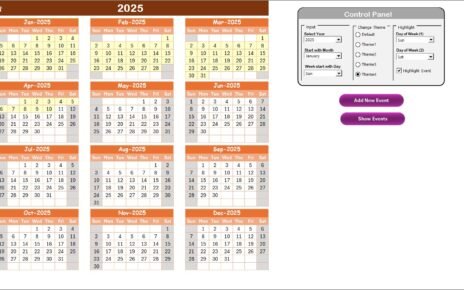Managing inventory effectively is vital for any business. However, without a clear audit plan, inventory control can quickly spiral into confusion and financial loss. This is why creating a well-structured Inventory Audit Action Plan in Excel is a game-changer. Not only does it streamline your stock verification process, but it also enhances transparency, accountability, and overall operational efficiency.
In this guide, we will walk you through everything you need to know about building an Inventory Audit Action Plan in Excel, along with best practices, advantages, and commonly asked questions.
What is an Inventory Audit Action Plan?
An Inventory Audit Action Plan is a strategic checklist used to verify the accuracy of inventory records. It helps ensure that the actual physical stock matches the recorded stock in your system. Businesses use audit plans to:
Click to Purchases Inventory Audit Action Plan in Excel
- Identify stock discrepancies
- Maintain accurate financial statements
- Detect theft or losses early
- Improve warehouse management
With an Excel-based checklist, the audit process becomes even more organized, flexible, and user-friendly.
Why Use Excel for an Inventory Audit Action Plan?
You might wonder, why Excel? Well, Excel offers a powerful combination of simplicity, flexibility, and customization.
- Ease of Use: You don’t need any coding knowledge.
- Customization: You can design it according to your audit process.
- Data Validation: Use drop-downs, checkboxes, and formulas to automate parts of the audit.
- Progress Tracking: Track checklist completion with automatic progress bars.
- Accessibility: Excel files can easily be shared and updated among teams.
Thus, Excel remains the go-to tool for small and large businesses alike.
Key Features of the Inventory Audit Action Plan Template
We have created a ready-to-use Inventory Audit Action Plan Checklist Template in Excel that covers everything you need. Let’s break it down:
1. Inventory Audit Action Plan Checklist Sheet Tab
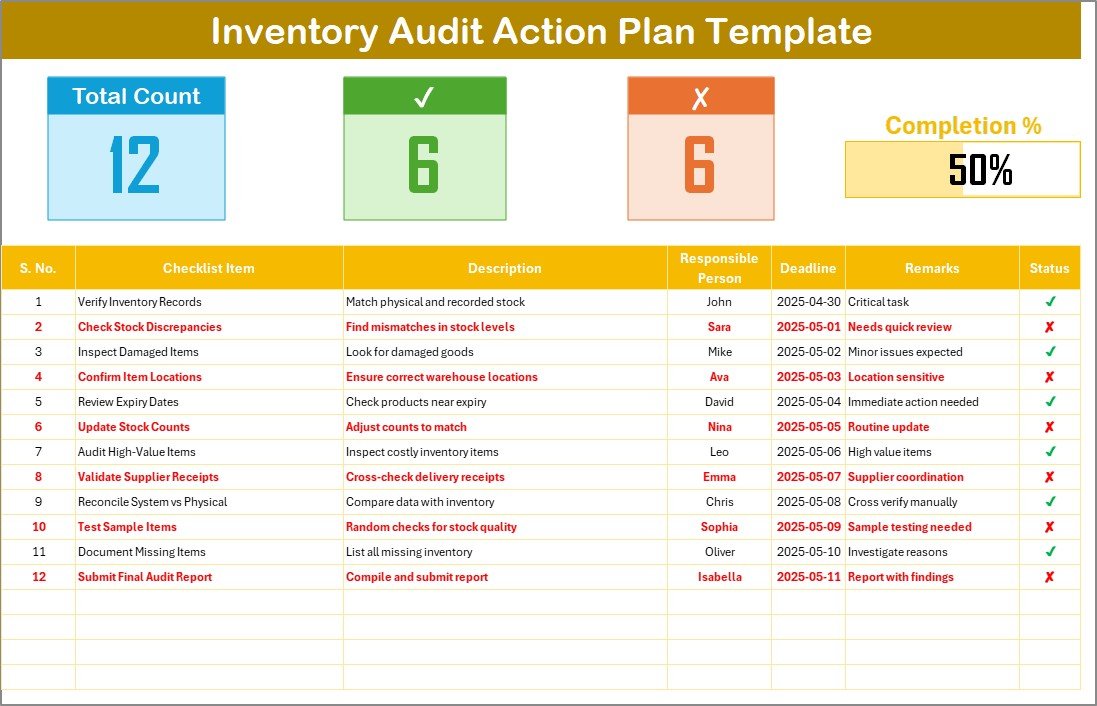
This is the main working area where you capture all checklist activities.
Top Section:
- Summary Cards: Displays Total Count, Checked Count, Crossed Count.
- Progress Bar: Visualizes checklist completion based on the percentage of tasks completed.
Checklist Table:
The core of the template includes:
- Serial No.: Unique ID for each audit activity.
- Checklist Item: What needs to be audited.
- Description: Short description of the item.
- Responsible Person: Assigned team member.
- Deadline: Due date for completing the task.
- Remarks: Additional comments.
- Status: Mark ✔ (Completed) or ✘ (Not Completed).
2. List Sheet Tab

To maintain consistency, we capture a unique list of “Responsible Persons” separately in this tab. This list creates a drop-down menu in the main table, making the assignment process quick and error-free.
How to Use the Inventory Audit Action Plan Checklist Template?
Getting started is easy! Follow these simple steps:
- Download the Inventory Audit Action Plan Template.
- Open the file and go to the “Inventory Audit Action Plan Checklist” tab.
- Add Audit Items under the Checklist Item column.
- Assign Tasks by selecting Responsible Persons from the drop-down.
- Set Deadlines for each audit activity.
- Mark Completion using ✔ or ✘ in the Status column.
- Monitor Progress using the top summary cards and progress bar.
This streamlined process ensures nothing falls through the cracks.
Advantages of Using an Inventory Audit Action Plan in Excel
Click to Purchases Inventory Audit Action Plan in Excel
Choosing an Excel-based audit plan brings a lot of advantages to the table:
🔧 Organized Process
You maintain a centralized view of all audit tasks, making it easier to manage and track.
🌎 Easy Collaboration
Share the Excel file with multiple users across departments for seamless collaboration.
📊 Visual Tracking
Progress bars and summary cards make it easy to see how much work is left.
🌊 Quick Customization
Add new checklist items, edit responsibilities, or change deadlines anytime.
✨ Error Minimization
Drop-downs and validations minimize manual data-entry errors.
🌟 Saves Time
Automated calculations save countless hours of manual tracking and reporting.
Clearly, Excel makes the entire inventory audit process smarter and faster.
Best Practices for an Effective Inventory Audit Action Plan
Following best practices can dramatically improve your audit accuracy and save resources. Here’s how:
1. Define Clear Objectives
Start by knowing what you want to achieve — reducing discrepancies, optimizing stock levels, or improving financial reporting.
2. Categorize Inventory
Group items logically (e.g., by warehouse, product category, supplier) to make audits easier.
3. Assign Responsibilities Clearly
Always assign each checklist item to a specific person and set a realistic deadline.
4. Use Drop-Down Lists
Utilize Excel’s data validation feature to reduce errors while assigning tasks.
5. Update Regularly
Treat the checklist as a living document. Update status, remarks, and progress continuously.
6. Review Progress Weekly
Review the checklist weekly to identify bottlenecks early and take corrective actions.
7. Keep Backup Copies
Always maintain backup versions to prevent data loss.
By sticking to these practices, your audit plan will stay on track and deliver impressive results.
Common Mistakes to Avoid When Using an Inventory Audit Action Plan
While building an audit checklist in Excel, steer clear of these common mistakes:
- Not assigning clear ownership of tasks.
- Setting unrealistic deadlines.
- Ignoring backup protocols.
- Forgetting to validate data entry.
- Using cluttered or confusing layouts.
Being mindful of these pitfalls ensures your inventory audit runs smoothly.
How Does an Inventory Audit Action Plan Help Your Business?
Implementing an Inventory Audit Action Plan is more than just a compliance requirement; it offers direct business benefits:
- ✅ Improved Financial Reporting: Accurate inventory records strengthen your financial statements.
- 🌊 Reduced Theft and Losses: Timely audits help detect anomalies early.
- 📊 Optimized Stock Levels: Identify overstocking or understocking issues.
- 👨💻 Enhanced Accountability: Every team member knows their responsibility clearly.
- ✨ Boosted Operational Efficiency: Audit insights can drive process improvements.
Hence, investing time in creating and maintaining an action plan pays back manifold.
Conclusion: Master Inventory Management with Excel
In today’s competitive market, inventory management can make or break a business. Without an efficient Inventory Audit Action Plan, you risk financial inaccuracies, stock mismanagement, and operational delays. Thankfully, with an Excel-based template, you can create a well-structured, easily trackable, and highly flexible audit system.
By using our ready-to-use Inventory Audit Action Plan Checklist Template, you can start auditing smarter, faster, and more effectively. Follow best practices, avoid common mistakes, and you will turn inventory audits from a dreaded task into a strategic advantage!
Frequently Asked Questions (FAQs)
1. What is an Inventory Audit Action Plan?
An Inventory Audit Action Plan is a checklist that organizes and monitors all tasks involved in verifying inventory accuracy.
2. Why should I use Excel for Inventory Audits?
Excel is flexible, user-friendly, and allows automation with formulas and validations, making inventory audits quicker and more accurate.
3. How often should inventory audits be conducted?
Ideally, businesses should perform a full audit at least once a year and conduct spot checks quarterly or monthly, depending on inventory volume.
4. What should be included in an Inventory Audit Checklist?
The checklist should include checklist items, descriptions, responsible persons, deadlines, remarks, and status indicators.
5. Can I customize the Inventory Audit Action Plan Template?
Absolutely! You can add or remove columns, change statuses, update tasks, or modify responsible persons based on your company’s needs.
6. How does an audit help in reducing theft?
Audits identify discrepancies between recorded and physical inventory, which can uncover patterns of loss or theft early.
7. What happens if I miss updating the checklist?
Missing updates can lead to incomplete audits, missed discrepancies, and inaccurate reporting. Always maintain timely records.
Click to Purchases Inventory Audit Action Plan in Excel
Visit our YouTube channel to learn step-by-step video tutorials
